#zegota
Photo
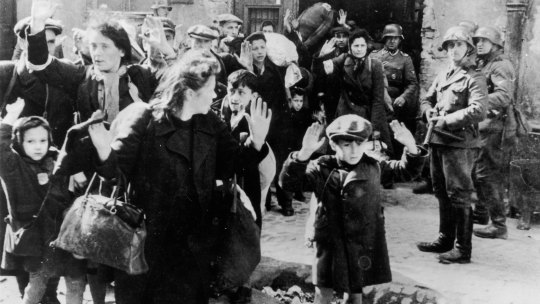


¿*UD. SABE QUE ES "ZEGOTA"?*
No todos los héroes llevan capa.
Durante la 2ª Guerra Mundial, Irena Sendler consiguió una autorización para trabajar en el Ghetto de Varsovia, como especialista de canalizaciones. Pero su trabajo encubría otro: Irena llevaba niños pequeños escondidos en el fondo de su caja de herramientas. En un saco de arpillera en la parte trasera de la camioneta, trasportaba a los niños más grandes. Llevaba allí un perro, al que había enseñado a ladrar a los nazis. cuando entraba y salía del ghetto.Claro que los soldados no querían ni acercarse al perro y los ladridos cubrían cualquier ruido que los niños pudieran hacer.
Mientras estuvo en ese trabajo, Irena consiguió retirar y salvar cerca de 2.500 niños.Finalmente los nazis la descubrieron. El 20 de Octubre de 1943 Irena Sendler fue apresada por la Gestapo y llevada a la infame prisión de Pawiak, donde fue brutalmente torturada. En un colchón de paja ella encontró una pequeña estampa de Jesús con la inscripción: “Jesús, en Vos confío”, y la conservó hasta 1979, cuando se la ofreció al Papa Juan Pablo II.
Ella, la única que sabía los nombres y direcciones de familias que albergaban criaturas judías, soportó la tortura y se negó a entregar a esos niños ocultos. Le quebraron los huesos de ambos pies y piernas, pero no consiguieron quebrar su determinación.Ya recuperada fue condenada a muerte y mientras esperaba su ejecución, un soldado alemán la llevó para un "interrogatorio adicional".
Al salir, el le gritó en polaco: "Corra". Así lo hizo, esperando ser alcanzada por las balas en la espalda. Salió por una puerta lateral y se escondió en unos huecos en la nieve hasta tener la certeza de que no era seguida.
Al dia siguiente, ya entre amigos, leyó que figuraba como muerta en una lista que los alemanes solían publicar.
Los miembros de la organización "ZEGOTA" (Rescate) habían conseguido detener la ejecución sobornando a un soldado alemán. Irena continuó trabajando con una identidad falsa. Irena mantenía un registo con el nombre de todos los niños que había rescatado, guardado en un frasco de vidrio enterrado debajo de un arbol en su jardín y lo conservó. Después de terminada la guerra, intentó localizar a los padres que hubieran sobrevivido y así reunir a las familias.
La mayoría de ellos habían fallecido entonces buscó casas de alojamiento con padres adoptivos.
En 2006 fue propuesta para recibir el Premio Nobel de la Paz, pero no fue seleccionada. Ese año quien lo ganó fue Al Gore (ex-vicepresidente norteamericano) por su campaña sobre el calentamiento global.
No permitamos que alguna vez esta Señora sea olvidada! Ahora Ud. sabe qué es "ZEGOTA".
Estoy aportando mi granito de arena para que ello no suceda reenviando este mensaje. Espero que hagas lo mismo.
Pasaron ya más de 75 años, desde que terminó la 2ª Guerra Mundial en Europa y este mensaje será reenviado como una cadena conmemorativa, en memoria de los 6 millones de judios, 20 millones de rusos, 10 millones de cristianos (inclusive 1.900 sacerdotes católicos ), 500 mil gitanos, centenas de millares de socialistas, comunistas y democratas y millares de deficientes físicos y mentales que fueron asesinados masacrados, violados, muertos en forma humillante, mientras otros pueblos del mundo miraban para otro lado. Ahora más que nunca, con el recrudecimiento del racismo, la discriminación y la masacre de miles de civiles en conflictos y guerras por todo el mundo, es imperativo asegurar que el Mundo nunca olvide.
*"Fuí educada en la creencia de que una persona necesitada debe ser ayudada con el corazón, sin importar su religión, raza, ni nacionalidad".**Irena Sendler.*
Gente como Irena Sendler que salvo millares de vidas prácticamente sola, es extremadamente necesaria. La intención de este mensaje es llegar a 40 millones de personas en todo el mundo.
Nota: En Netflix hay una película sobre ella: Los niños de Irena Sandler.
#irena sandler#los niños de arena sandler#II guerra mundial#nazis#gestapo#holocausto#polonia#heroes#zegota#sobre la marcha#conflicto#genocidio#niños#historia
24 notes
·
View notes
Text

2 notes
·
View notes
Text
La increíble historia de Zegota, la red clandestina creada por dos mujeres que salvó del Holocausto a 50 mil judíos
La increíble historia de Zegota, la red clandestina creada por dos mujeres que salvó del Holocausto a 50 mil judíos
Zofía Kossac y Wanda Krahelska eran dos mujeres completamente diferentes, una era conservadora y la otra socialista, pero la ocupación de Polonia por los nazis las unió detrás de un objetivo: salvar las vidas de los judíos polacos condenados al exterminio. Para lograrlo, el 4 de diciembre de 1942 –hace 80 años– pusieron en marcha una organización secreta que protegió a más de 50.000 perseguidos.…

View On WordPress
#50 mil judios#Daniel Cecchini#Dos mujeres#Engaño#Holocausto#Infobae#La red clandestina#Nazis y Gestapo#Polonia#Zegota#Zofía Kossac y Wanda Krahelska
0 notes
Text
The Terror does make me think of my crust punk days, and primarily because a Zegota show also featured crowds of unwashed young men with utopian ideas dancing homoeroticly in an obvious fire trap, but also because reverse scurvy was as common a problem in the crust punk world as real scurvy was for the Franklin Expedition. An example: we once visited some friends who, through shenanigans, had access to a genuinely unlimited supply of Odwalla juices and smoothies. When we left, they gave us enough Odwalla juice to fill the trunk of my Chevy cavalier and somewhere on the PA turnpike, someone mention the extreme color of her pee, causing us to do the math on the empty bottles and realize that we’d consumed 7-8,000 times the recommended dose of vitamin c that morning. Fundamentally the opposite of life on the HMS Terror.
57 notes
·
View notes
Text

The Anti-Semite Who Saved Jews: Zofia Szczucka
Arrested by the Gestapo
Zofia Kossak Szczucka was a Polish novelist who overcame her own antisemitism to save thousands of Jews from Nazi death camps.
Born in Kosmin, Poland in 1889 to an illustrious family of artists and writers, Zofia became a writer as well and penned a series of historical novels in the 1920’s and 30’s. The books covered a range of time periods and locations, and included a book about the Russian Revolution of 1917 and one about the Crusades. A devout Catholic, many of her books had religious themes and she wrote extensively for the Catholic press. Zofia married Stefan Szczucki, but he died young, and she remarried Zygmunt Szatkowski. Together they had one daughter, Anna.
After Germany invaded Poland in 1939, Zofia edited the underground newspaper Polska Zyje (Poland Lives.) In 1941, she co-founded the Catholic organization Front Odrodzenia Polski (Front for the Rebirth of Poland) and edited its newspaper Prawda (The Truth). To protect herself, she adopted the code name “Weronika.”
In 1940, the occupying Germans forced the Jews of Warsaw into a squalid, overcrowded ghetto. After a visit to the ghetto, Zofia was shocked, and felt a duty to tell the world what she had seen. She wrote a leaflet called “Protest” and printed 5000 copies for wide distribution. In the pamphlet, she described the horrific conditions in the ghetto, as well as the deportations of residents to death camps, starting in 1942. Zofia wrote of the Warsaw ghetto inhabitants, “All will perish… Poor and rich, old, women, men, youngsters, infants…. Their only guilt is that they were born into the Jewish nation condemned to extermination by Hitler.”
Surprisingly, when the war began, Zofia had no affection for the Jewish community in Poland, and openly described her own anti-Semitism in “Protest.” She wrote, “Our feelings toward Jews have not changed. We do not stop thinking of them as political, economic, and ideological enemies of Poland.” However, she said, “We are required by God to protest, God who forbids us to kill. We are required by our Christian consciousness. Every human being has the right to be loved by his fellow men. The blood of the defenseless cries to heaven for revenge. Those who oppose our protest are not Catholics.”
Either her personal beliefs towards Jews changed, or she put those prejudices aside in the interest of justice, because in 1942 she co-founded the Provisional Committee to Aid Jews, also known as Zegota. The organization was created to save Jews from death camps and contained one hundred secret cells that provided food, medicine, cash, and false IDs to thousands of Jews in Warsaw, as well as many in Krakow and Vilna. It is estimated that members of Zegota forged over 50,000 documents, including marriage, birth, and death certificates, as well as baptismal records to “prove” that people suspected of being Jews were actually Christians. Zofia and other Zegota volunteers also cared for over 3000 Jews in hiding in Warsaw.
Zofia repeatedly petitioned the Polish Government-in-Exile to appeal to the Polish people to help Jews. Indeed, the exiled government provided significant funding for Zegota until the end of the war.
Zofia was well aware that her underground activities saving Jews was likely to get her killed. According to noted historian Richard Lukas, “The number of Poles who perished at the hands of the Germans for aiding Jews” may have been as high as 50,000 (!)
In 1943, Zofia was arrested by the Gestapo and transported to Auschwitz. Fortunately, she survived until liberation in 1945. She returned home and continued writing books, including From the Abyss, about her experiences at Auschwitz, and The Covenant, about Jewish patriarch Abraham. Zofia also published numerous books for children and young adults.
After the war, a communist government was installed in Poland. The new Minister of the Interior, Jakub Berman, was Jewish. Grateful to Zofia for her heroic actions on behalf of his people, and knowing that as a Catholic activist she would be targeted by the new government, he urged her to leave Poland. Zofia followed his advice, but returned to her homeland in 1957.
Zofia Kossak Szczucka died in Poland in 1968. She was survived by her daughter Anna, also a Polish resistance fighter, who wrote a book about her experiences during the war. Three years after Zofia’s death, a memorial plaque was placed on the outside of her spiritual home, All Saints Parish Church. The plaque reads, “To Zofia Kossak, the renowned Polish Catholic writer, a woman of great generosity and courage.”
In 1982, she was posthumously honored as Righteous Among the Nations by Israeli Holocaust Memorial Yad Vahem. The National Bank of Poland issued a coin in 2009 honoring Zofia and two other heroes of the Holocaust, Irena Sendler and Matylda Getter. In 2018, Zofia was awarded the highest civilian honor, the Order of the White Eagle.
For overcoming her own prejudice and saving Jewish lives, we honor Zofia Kossak Szczucka as this week’s Thursday Hero.
39 notes
·
View notes
Text
Irena Sendler
Rescuing Hope from the Shadows of the Holocaust
“If you see someone drowning, you must jump in to save them, whether you can swim or not.” Irena Sendler was just 7 years old when her father spoke those words.

Irena was born in 1910 and grew up an only child in the Polish town of Otwock. After her father’s death, Jewish community leaders, touched by his kindness, offered to help Irena’s mother pay for her education. Irena studied Polish literature at Warsaw University and joined the Socialist party before becoming a social worker. She was nearly 30 when the Nazis took over Warsaw through ruthless aerial bombardments and a brutal occupation that would last the duration of the war.
As soon as the Nazi tanks rolled in, Irena began offering food and shelter to Jews in her neighborhood. By the following year, the Warsaw Ghetto, the largest in Nazi-occupied Europe, had been constructed: 10–foot-high walls topped with barbed wire and surrounded by Nazi guards with orders to shoot escapees on sight. Some 400,000 Jewish people were forced into 1.3 square miles of space and afforded daily rations of a mere 181 calories. At least 254,000 of those who managed to survive the rampant disease, mass starvation, and random killings in the ghetto were sent to Treblinka concentration camp, where most died.
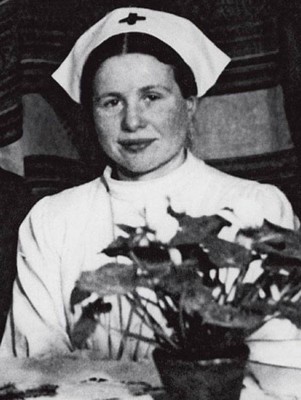
Between 1939 and 1942, Irena, along with friends and colleagues, made over 3,000 false documents to help Jewish families escape the ghetto, saving many lives. She then joined the underground Polish organization, Zegota, in December 1942 and ran its children’s division. Using her Social Welfare Department permit, Irena entered the Warsaw Ghetto under the guise of checking for signs of typhus, which the Nazis feared would spread beyond the ghetto walls. Wearing a Star of David to show her solidarity, Irena began talking Jewish parents into giving up their children, who faced near-sure fates of dying in the ghetto or death camps. The parents had a devastatingly heartbreaking choice to make, and Irena, risking her own life, could afford them no assurances—only a chance their children otherwise would not have.
Irena and her group of about 25 volunteers, mostly women, smuggled the children past Nazi guards using various methods. Sometimes Irena took children out in an ambulance, hidden under a stretcher, or in the trolley, concealed in trunks or suitcases. Other times, she put sedated children in body bags to sneak out the ghetto entrance. Some children were taken out through sewer pipes or other secret underground passages; others escaped through the old courthouse that stood on the edge of the ghetto. If a child spoke good Polish and could rattle off some Christian prayers, he or she could be smuggled into the church next to the ghetto through an entrance guarded by Germans and later taken to the Aryan side. But all of these methods were highly dangerous, and the Germans often used ruses to trick the Poles and arrest them.
After removing the children from the ghetto, Irena and her coworkers adopted them into the homes of Polish families or hid them in convents and orphanages. They ensured that each family hiding a child knew he or she must be returned to Jewish relatives after the war. Meanwhile, Irena made lists of the children’s real names on thin tissue paper and hid them in jars, which she buried under an apple tree across the street from the German barracks.
On October 20, 1943, the Gestapo came to Irena’s apartment; two German guards stood watch outside as nine pounded up the stairs. In the nick of time, Irena tossed the list of children’s names to a friend, who hid it under her arm. The Germans dragged Irena to Pawiak prison and beat her severely, fracturing her feet and legs. A young guard interrogated and tortured her for the names of the Zegota leaders, and she fed him a story that she and her collaborators had prepared in the event of capture. But the guard held up a folder of intelligence the Gestapo had gathered on her, including the names of people who had informed on her. Irena received a sentence of death by firing squad.
Irena described feeling near relief at her death sentence, which would spare her the constant, unbearable fear she felt risking her life every day. But at the last minute, Zegota bribed a German guard who helped Irena escape just as she was being led to her execution. The next day, posters went up all over the city with the news that Irena had been shot. She read the posters herself.
After her escape, Irena went into hiding, just like the children she rescued, for the remainder of the war. All the while, she continued her work. With the help of the Polish Resistance and some 200 convents and orphanages in the city of Warsaw and throughout the countryside, Irena and her helpers managed to save the lives of at least 2,500 Jewish children. When the war was finally over, she dug up the jars she had buried under the noses of the Germans and began the difficult job of finding the children and locating a living relative. But almost all the parents of the children that Irena saved died at the Treblinka death camp.

Irena lived out the next 50 years in anonymity, suppressed by the Communist regime in post-war Poland and haunted by the horrors she had witnessed throughout the war. She had nightmares every single night of her life, asking herself, “Did I do enough?” Then in 1999, when Irena was 89 years old, a group of Protestant high school students from Kansas dug up her story and brought it to light, giving the world a true heroine—and Irena the recognition she so rightly deserved. In 2007, Irena was nominated for the Nobel Peace Prize before passing away in 2008 at the age of 98.
1 note
·
View note
Text
La historia de Irena Sendler o Zegota.
Durante la 2ª Guerra Mundial, Irena Sendler consiguió una autorización para trabajar en el Ghetto de Varsovia, como especialista de canalizaciones. Pero su trabajo encubría otro: Irena llevaba niños pequeños escondidos en el fondo de su caja de herramientas En un saco de arpillera en la parte trasera de la camioneta, trasportaba a los niños más grandes. Llevaba allí un perro, al que había enseñado a ladrar a los nazis. cuando entraba y salía del ghetto.
Claro que los soldados no querian ni acercarse al perro y los ladridos cubrían cualquier ruido que los niños pudieran hacer.
Mientras estuvo en ese trabajo, Irena consiguió retirar y salvar cerca de 2.500 niños.
Finalmente los nazis la descubrieron. El 20 de Octubre de 1943 Irena Sendler fue apresada por la Gestapo y llevada a la infame prisión de Pawiak, donde fue brutalmente torturada. En un colchón de paja ella encontró una pequeña estampa de Jesús con la inscripción: “Jesús, en Vos confío”, y la conservó hasta 1979. cuando se la ofreció al Papa Juan Pablo II. Ella, la única que sabía los nombres y direcciones de familias que albergaban criaturas judías, soportó la tortura y se negó a entregar a esos niños ocultos. Le quebraron los huesos de ambos pies y piernas, pero no consiguieron quebrar su determinación.
Ya recuperada fue condenada a muerte y mientras esperaba su ejecución, un soldado alemán la llevó para un "interrogatorio adicional". Al salir, el le gritó en polaco: "Corra". Así lo hizo, esperando ser alcanzada por las balas en la espalda. Salió por una puerta lateral y se escondió en unos huecos en la nieve hasta tener la certeza de que no era seguida.
Al dia siguiente, ya entre amigos, leyó que figuraba como muerta en una lista que los alemanes solían publicar.
Los miembros de la organización "ZEGOTA" (Rescate) habían conseguido detener la ejecución sobornando a un soldado alemán. Irena continuó trabajando con una identidad falsa. Irena mantenía un registo con el nombre de todos los niños que había rescatado, guardado en un frasco de vidrio enterrado debajo de un arbol en su jardín y lo conservó. Después de terminada la guerra, intentó localizar a los padres que hubieran sobrevivido y así reunir a las familias. La mayoría de ellos habían fallecido entonces buscó casas de alojamiento con padres adoptivos.
En 2006 fue propuesta para recibir el Premio Nobel de la Paz, pero no fue seleccionada. Ese año quien lo ganó fue Al Gore (ex-vicepresidente norteamericano) por su campaña sobre el calentamiento global.
No permitamos que alguna vez esta Señora sea olvidada! Ahora Ud. sabe qué es "ZEGOTA". Estoy aportando mi granito de arena para que ello no suceda reenviando este mensaje. Espero que hagas lo mismo.
Pasaron ya más de 75 años, desde que terminó la 2ª Guerra Mundial en Europa y este mensaje será reenviado como una cadena conmemorativa, en memoria de los 6 millones de judios, 20 millones de rusos, 10 millones de cristianos (inclusive 1.900 sacerdotes católicos ), 500 mil gitanos, centenas de millares de socialistas, comunistas y democratas y millares de deficientes físicos y mentales que fueron asesinados masacrados, violados, muertos en forma humillante, mientras otros pueblos del mundo miraban para otro lado. Ahora más que nunca, con el recrudecimiento del racismo, la discriminación y la masacre de miles de civiles en conflictos y guerras por todo el mundo, es imperativo asegurar que el Mundo nunca olvide.
*"Fuí educada en la creencia de que una persona necesitada debe ser ayudada con el corazón, sin importar su religión, raza, ni nacionalidad".*
*Irena Sendler.*
Gente como Irena Sendler que salvo millares de vidas practicamente sola, es extremadamente necesaria.
La intención de este mensaje es llegar a 40 millones de personas en todo el mundo-
Por favor, comparte 👨🏻🏫👩🏻🏫
0 notes
Text
"Zegota - Struck by the Wild"
youtube
Step aside
You mountains of hardest stone
You deserts of drowning heat
Step aside
Years and years and years
The history of the world
Means nothing
Lay me in the ground
I will ride across the world
Step aside
You gates of tempered steel
You gates of heaven and hell
I Am Alive
1 note
·
View note
Photo
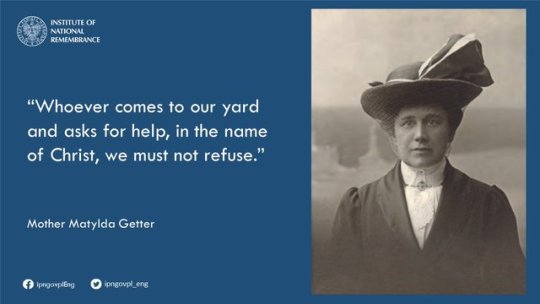
Matylda Getter was a Polish Catholic nun and social worker in pre-war Poland. In German-occupied Warsaw during World War II she cooperated with Irena Sendler and the Żegota resistance organization in saving the lives of hundreds of Jewish children.
(BECAUSE GOD SAID - MATEUSZ WYRWICH)
Angels wearing nuns’ habits
Lea Balint from Jerusalem is 80 years old. Wherever she can, she has been testifying till today how her life was saved by s. Matylda Getter and other sisters from the convent. And they have been called angels till today. When she was moved to the convent she was only 3 years old. She found a refuge, together with other Jewish and Polish children, in the convent house in Brwinów which was established by the superior Getter in 1941. Lea Balint emphasized that the nuns had saved her life three times. The first time, when they took her to their house in Brwinów. The second time when unexpectedly the Germans arrived and a nun was in a veranda with her. Nearly last minute she noticed a big basket full of hay on whose top there were eggs. She quickly took out some hay from that basket and put little Lea into it. She covered the child with the rest of the hay and on the top she put back the eggs. The third case took place in 1944. During the Warsaw Uprising, when fire glow was reaching Brwinów, Lea had hand infection. The nun took her to a sanitary point a few kilometers away, near the borders of Warsaw. The little girl got an injection there and thanks to it she did not die.
I have always felt that I am loved, despite being far away from my parents, despite my continuous fear – says Lea Balint. – I remember the following scene: when there was bombarding, we were very scared and crying. One of older girls asked how long it would last. S. Getter answered that there was no reason to be scared and she would go at once to ask God about it. She returned smiling and asked us to remain calm, as God said that the bombarding would end soon and nothing bad would happen to us. And, indeed, after several minutes everything turned quiet and peaceful. Friendliness which I felt in the house of the Franciscan nuns of Mary’s Family in Brwinów, always accompanied me. This good was throwing its light onto my whole life. Also onto the way of my bringing up children and grandchildren who live in Israel.
#Matylda Getter#catholic#Poland#israel#jewish#jews#wwii#irena sendler#żegota#zegota#World war ii#Auschwitz#Christian#roman catholic
10 notes
·
View notes
Text
Irena Sendler
Remembering the victims of the Holocaust is extremely important, now probably more then ever, however it is also important to remember the heroes who saved so many from certain death.
Today marks the 111th birthday of Irena Sendler.
Sendler was born Irena Krzyżanowska on February 15, 1910, in Otwock, Poland. Her parents were members of the Polish Socialist Party, and her father, Stanisław…

View On WordPress
0 notes
Video
youtube
As the whole world fell in
And no one around could believe their eyes
O'er one and too many more
It's one of those things you die to believe is true
It takes courage to see that it's not
3 notes
·
View notes
Photo
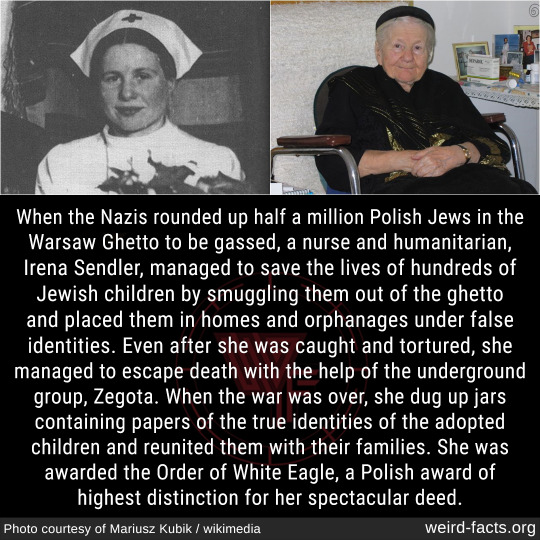
When the Nazis rounded up half a million Polish Jews in the Warsaw Ghetto to be gassed, a nurse and humanitarian, Irena Sendler, managed to save the lives of hundreds of Jewish children by smuggling them out of the ghetto and placed them in homes and orphanages under false identities. Even after she was caught and tortured, she managed to escape death with the help of the underground group, Zegota. When the war was over, she dug up jars containing papers of the true identities of the adopted children and reunited them with their families. She was awarded the Order of White Eagle, a Polish award of highest distinction for her spectacular deed.
696 notes
·
View notes
Text

1 note
·
View note
Text
I’m not listening to children tell me what is or isn’t punk. If you saw the square, Mr Rogers, wholesome theater kid shit that went down at every, single Zegota show and the high percentage of library employees at those shows you’d fucking hurl. Brian Catharsis taught me that game where you pass a string around saying nice things about the person on the other side of the string.
40 notes
·
View notes
Text
Wanda Krahelska-Filipowicz

Wanda Krahelska-Filipowicz was born in 1886. Krahelska-Filipowicz was an active member of the Polish underground resistance during World War II. She was the co-founder of the Provisional Committee to Aid Jews, the precursor to Zegota, which aided an estimated 50,000 Polish Jews. Krahelska-Filipowicz had been providing financial support to Jewish refugees as early as 1938, and hid Jews in her own home. In 1967, she was recognized as Righteous Among the Nations.
Wanda Krahelska-Filipowicz died in 1968.
17 notes
·
View notes
Photo
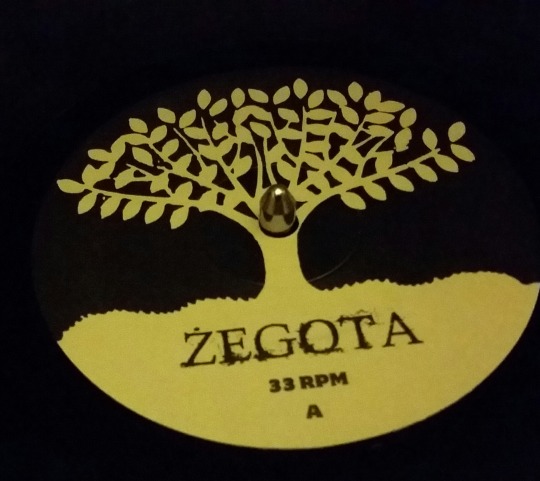
Listening to loads of oldies making me feel a bit better
0 notes